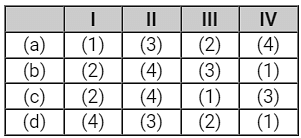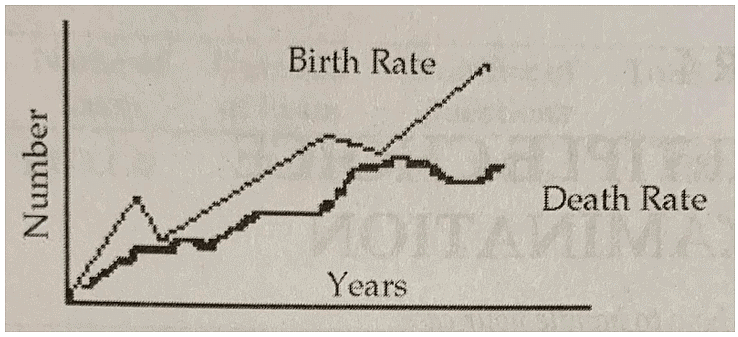How to Solve Multiple Choice Questions (MCQs) In the CLAT Examination? PDF Download
The LL.B./CLAT Entrance Examination examines you by adopting the methodology of 'Multiple Choice Questions. You are required to pick up the most suitable answer, out of the four given alternatives. For every correct answer, you gain 4 marks and in some entrance examinations, you lose 1 mark for every wrong answer.
Before Starting, Some Points to Remember
- Law Schools want candidates who are capable of being groomed and developed as lawyers. The candidate's profile must fit the requirements of the profession.
- Be relaxed while attempting the questions. Be logical in your reasoning.
- The points you raise should be well organized with substance.
- Express yourself as clearly as possible in your chosen medium.
- The 'test' as it is termed is only a friendly attempt to know you. Be relaxed and hopeful.
Let’s Begin!
The Multiple Choice Questions (MCQs) have one unique feature. They are based on the 'Principle of Recognition. You don't have to bear the burden of recollecting and recalling everything rather you might have read. The information is hidden somewhere in your sub-conscience, which is activated as soon as you see the correct answer.
Let us take an example:
The density of water is maximum at
(a) -32°C
(b) -40°C
(c) 4°F
(d) 4°C
In the days preceding the exam, if you have even once read, that the density of water is maximum at 4°C, you will have no problem marking the choice (d).
This question illustrates, what is known as the "simple" MCQ. But this is by no means the only type of MCQ. In fact, the majority of MCQs require more intelligence.
Take For Example A "Matching Type" MCQ: Match the Following:
(I) Gandhi
(II) Jinnah
(III) Nehru
(IV) Gokhale
(1) Servants of Indian Society
(2) Young India
(3) Congress Socialist Party
(4) Muslim League
Here the correct choice is (b). Obviously, you have to know a range of facts to get this one correct.
The third type of MCQ has more than one correct response.
Note in the example given below, that you must know both, that Ashoka promoted Buddhism and that he conquered Kalinga to mark (b) which is the correct choice. Ashoka...
(I) Conquered Kalinga
(II) Promoted Buddhism
(III) Visited China
(IV) Promoted hunting and meat eating
(a) All are correct
(b) Only I & II are correct
(c) Only I, III & IV are correct
(d) Only II & III are correct.
Your ability to link up facts is best tested by the Assertion-Reasoning type of MCQ. Consider the example given below:
ASSERTION (A): The British established and developed Indian Railways.
REASON (R): The British were keenly interested in India's economic development.
(a) Both A and R are true and R is the correct explanation of A.
(b) Both A and R are true but R is not the correct explanation of A.
(c) A is true but R is false.
(d) A is false but R is true.
Of course, the British didn't give a damn about India's economic development. They were only interested in bleeding India dry. Every action of theirs was prompted by the desire to keep India enslaved, and the development of railways was part of the strengthening the British Administration by improving the means of communication. The correct choice is, therefore, (c).
The fifth type of MCQ asks you to draw inferences after studying a given graph/chart/diagram etc.
For example, from the graph below, which would be the most suitable inference?
(a) Population growth is stable
(b) Population is decreasing
(c) Population is increasing
(d) No trend is obvious
When the birth rate exceeds the death rate, the only logical inference can be, that the population is increasing, hence the correct response is (c).
You can also be asked to rank items, order or sequence them. Consider the example given below, where the most suitable choice is (d).
The following are essential for survival. Arrange them according to their necessity:
(I) Water
(II) Oxygen
(III) Food
(IV) Clothes
(a) I, II, III, IV
(b) I, III, IV, I
(c) II, IV, III, I
(d) II, III, I, IV
Finally, a question may be posed to you in a true-false format, for example:
(1) Constitution of India is the supreme law of the land
(II) Parliament can entirely rewrite the Constitution
(III) Supreme Court can delete Articles of Constitution in the public interest
(IV) Constitution of India came into force on 26th January 1950
(a) All statements are true
(b) I & IV are true
(c) III & IV are false
(d) II & III are true
Here (b) is the correct choice.
Some MCQs can be very tricky. Here all options are correct, but do not tell the whole truth; only one option is the best representative answer. You should be patient enough to read all the four options and then select the correct or the best answer. Consider, the an example is given below carefully: The President of India is elected by:
(a) the members of Parliament and State Assemblies
(b) elected members of Parliament and State Assemblies
(c) elected members of Parliament and State Assemblies by proportional representation
(d) the elected members of Parliament and State Assemblies by secret ballot, through proportional representation and a single transferable vote system.
The answers given above are correct and complete in descending order. You might get trapped in a wrong answer if you do not exercise the patience of reading all four choices. Answer (d) is obviously the correct choice.
The point being made is, that, you must read the question and all the options with utmost caution and concentration, before making your choice.
Finally, a word needs to be said about guesswork. As there is negative marking for every incorrect response, your guessing must be restrained and scientific. According to the 'Law of Probability, if there are four equally unknown choices, the probability of making the correct choice is 25%. You are advised to use the 'principle of elimination' and take a guess only if you have narrowed down your choice to two options. For example Aversion to the number 13 is called
(a) Trikaedekaphobia
(b) Claustrophobia
(c) Hydrophobia
(d) Kaliedophobia
In this example, if you know that Claustrophobia means 'a morbid dread of closed places' and Hydrophobia means 'dread of water, then you can take a guess between choices (a) and (d). You have a 50% probability of choosing (a) or Trikaedekaphobia and hitting the nail on its head.
An awareness of the formats in which questions are set and of the scientific ways of dealing with them are important ingredients of your preparedness. Preparedness as the adage goes is the pre-condition of success. Where all questions are important and every mark counts, your endeavour must be to put up a fight to every question. If you can develop the art of thinking, winning this fight is not difficult!
FAQs on How to Solve Multiple Choice Questions (MCQs) In the CLAT Examination?
| 1. How should I approach solving multiple choice questions in the CLAT examination? |  |
| 2. How can I effectively eliminate incorrect options in MCQs of the CLAT examination? |  |
| 3. Are there any specific strategies to manage time while solving MCQs in the CLAT examination? |  |
| 4. What should I do if I am completely unsure about the answer to an MCQ in the CLAT examination? |  |
| 5. Can I use any specific techniques to improve my performance in solving MCQs for the CLAT examination? |  |

|
Explore Courses for CLAT exam
|

|


















